My Dear Brothers and Sisters in Christ,

After receiving the blessings of the Christmas Season, celebrating the birth of Christ Our Lord, many return to their ordinary schedules of prayer, work or family obligations. So too, the Church enters a portion of Ordinary Time. Throughout Advent and Christmas, we placed the emphasis of our prayers and attention on welcoming Christ into our hearts and homes while ever awaiting His triumphant return with the Second Coming. Now in this Ordinary Time, we take Christ with us and go forth living what it means to be A Disciple of Christ. Call to mind the lives of Christ’s early Disciples, of the Saints who lived heroically, and even of those great examples of holiness in our own lives. How might we follow these examples in everyday life in order to be A Disciple of Christ?
First let us recall Christ’s words to His Disciples, “Go, therefore, and make disciples of all nations, baptizing them in the name of the Father, and of the Son, and of the Holy Spirit, teaching them to observe all that I have commanded you. And behold, I am with you always, until the end of the age.” (Mt. 28:19-20). Jesus gives them a mission! What mission has the Lord called you to do with your life? Do you help at a food pantry, volunteer at your Parish, work to counter Human Trafficking or the pornography industry that thrives in our society? Yes, it can get messy. How are you deepening your journey in becoming A Disciple of Christ? These are all great ways to take what you have received and to give back in some way in the name of Christ.
To each one of us Christ says, “Without cost you have received, without cost you are to give.” (Matthew 10:8). In order to live as A Disciple of Christ, this mission must be embraced like the Cross itself. Of course, this may be difficult at times, there may be the temptation to think, “What am I able to give?” along with thoughts of inadequacy or tepidness. It is important to know that it is not always big things that the Lord asks of us. St. Mother Teresa, whom I had the pleasure of speaking with on several occasions, taught that, “Not all of us can do great things. But we can do small things with great love.” These words of hers are an encouragement to me as they may be for you as well.
In the Gospel of Mark Jesus tells the parable of the sower. If we focus on the sower he seems absolutely mad. Why? Throwing seed just everywhere with no regard for the soil where the seeds land. The farmer could be thought to be crazy for not targeting the placement of the seed, seeding only the good soil. However, God asks you and I to go out and sow His Word and His love – not only on receptive soil, not only to those who will respond but also on the path, on the rocks and into the thorn bushes. God’s love is irrational, extravagant, embarrassing, even unreasonable and over the top.
So, do not be afraid to do even the big things at the prompting of God on the journey of becoming A Disciple of Christ; the extravagant action that some see as over the top may be what Christ calls you to do as a Disciple. Take the risk, make the move, take even the smallest step and do not worry about who notices. Sow His Word as A Disciple of Christ and leave the rest to the providence of God. Do not be afraid!
In times where the Lord may be asking more of us, the words spoken to St. Paul offer consolation wherein Christ says, “My grace is sufficient for you, for power is made perfect in weakness.” (2 Corinthians 12:9). Whether something small is being asked of you or something great, there are always more opportunities to respond to this mission; to go forth in the Name of the Lord as A Disciple of Christ. Pope Francis has taught us that “In virtue of […] baptism, all the members of the People of God have become missionary disciples” and continues by saying all the faithful are called to a personal involvement in the work of evangelization.
Have courage in knowing the Lord desires to use you, your particular skills and abilities, your gifts and talents. Continue to invite Christ into your home and your heart, then take Him out into the streets, into your communities. They may not be pretty but as St. Mother Teresa told us, “Yesterday is gone. Tomorrow has not yet come. We have only today. Let us begin.” Be encouraged to continue the ways you are already living as A Disciple of Christ in your life and to begin new ways, new actions today.
As we continue this portion of Ordinary Time, let us work together in this mission that Christ has given us to go forth and to spread the Gospel and be A Disciple of Christ. To be people of action!!
Thank you for responding to His call in your life. Rest assured of my prayers that you would continue to allow Christ into your life in new ways, big or small each day and go forth in action. Please keep me in your prayers as well.
Sincerely yours in Christ,
Frank J. Dewane




 Speaking during a Mass at St. Agnes Parish in Naples on Jan. 26, Bishop Dewane noted that Pope Francis designated this Third Sunday of Ordinary Time to refocus the faithful on the Bible. The Bishop stressed that this designation is not a onetime happening, but instead is the beginning of what the Holy Father prays will be a renewed appreciation and understanding of Sacred Scriptures by all Catholics.
Speaking during a Mass at St. Agnes Parish in Naples on Jan. 26, Bishop Dewane noted that Pope Francis designated this Third Sunday of Ordinary Time to refocus the faithful on the Bible. The Bishop stressed that this designation is not a onetime happening, but instead is the beginning of what the Holy Father prays will be a renewed appreciation and understanding of Sacred Scriptures by all Catholics. During the Jan. 28-30 Catholic Days at the Capitol, Bishop Frank J. Dewane gave a legislative briefing to participants from across Florida. A group of nearly 50, including students from each Diocesan Catholic high school traveled for this important lobbying opportunity.
During the Jan. 28-30 Catholic Days at the Capitol, Bishop Frank J. Dewane gave a legislative briefing to participants from across Florida. A group of nearly 50, including students from each Diocesan Catholic high school traveled for this important lobbying opportunity.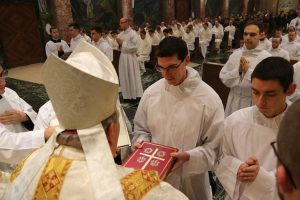
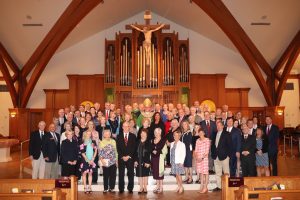 The Order of Malta – American Association, held and Board of Counsellors meeting in Naples in late January. Bishop Frank J. Dewane celebrated a Mass for the group on Jan. 27 at St. William Parish.
The Order of Malta – American Association, held and Board of Counsellors meeting in Naples in late January. Bishop Frank J. Dewane celebrated a Mass for the group on Jan. 27 at St. William Parish. Bishop Frank J. Dewane celebrated Mass at St, Agnes Parish in Naples on Jan. 26, the Sunday of the Word of God. During the Mass, Bishop Dewane offered a special recognition for the Knights on Bikes, a club of Knights of Columbus which includes avid motorcycle enthusiasts. Members took part in the opening and closing processions of the Mass. At the conclusion, the Bishop blessed special key chains with a cross. Each member wears a vest with patches that read: “In God We Trust and Ride” and “In Service to One. Inservice to All.”
Bishop Frank J. Dewane celebrated Mass at St, Agnes Parish in Naples on Jan. 26, the Sunday of the Word of God. During the Mass, Bishop Dewane offered a special recognition for the Knights on Bikes, a club of Knights of Columbus which includes avid motorcycle enthusiasts. Members took part in the opening and closing processions of the Mass. At the conclusion, the Bishop blessed special key chains with a cross. Each member wears a vest with patches that read: “In God We Trust and Ride” and “In Service to One. Inservice to All.” St. Agnes Parish in Naples, honored Law Enforcement Officers, Fire Fighters, and First Responders, both active and retired with a Blue Mass on Jan. 25. Dozens of officers attended with their families to honor first responders who died in the line of duty and to pray for the safety of those still serving. The guest homilist was Father Sean Connor, Chaplain of the Boston Police Department. During the final blessing Father Michael Orsi, Parochial Vicar of St. Agnes, blessed medals of St. Michael the Archangel to give out to all the first responders for protection.
St. Agnes Parish in Naples, honored Law Enforcement Officers, Fire Fighters, and First Responders, both active and retired with a Blue Mass on Jan. 25. Dozens of officers attended with their families to honor first responders who died in the line of duty and to pray for the safety of those still serving. The guest homilist was Father Sean Connor, Chaplain of the Boston Police Department. During the final blessing Father Michael Orsi, Parochial Vicar of St. Agnes, blessed medals of St. Michael the Archangel to give out to all the first responders for protection. Catholic Charities Diocese of Venice Inc. and the Knights of Columbus hosted The Goldtones Jan. 25 at the first ever North Port Sugar Bowl Show of Shows. Playing songs from 50s and 60s The Goldtones entertained an enthusiastic crowd at the North Port Performing Arts Center at North Port High School. The Sugar Bowl Fund helps support families in crisis, providing emergency financial assistance for low-income families in Sarasota, Manatee and Charlotte counties. The Sugar Bowl Fund is a community partnership between Catholic Charities and the local Knights of Columbus Councils. The goal of the fund is an attempt to keep families together, self-sufficient and relieved of some of the pressures that cause greater hardship. Financial assistance can include help for car repairs, medical bills, utilities, rent or mortgage payments as well as relocation fees. The North Port Show of Shows was the first in this part of the area, similar events have been taking place for several years in Venice each fall and in Bradenton each Spring.
Catholic Charities Diocese of Venice Inc. and the Knights of Columbus hosted The Goldtones Jan. 25 at the first ever North Port Sugar Bowl Show of Shows. Playing songs from 50s and 60s The Goldtones entertained an enthusiastic crowd at the North Port Performing Arts Center at North Port High School. The Sugar Bowl Fund helps support families in crisis, providing emergency financial assistance for low-income families in Sarasota, Manatee and Charlotte counties. The Sugar Bowl Fund is a community partnership between Catholic Charities and the local Knights of Columbus Councils. The goal of the fund is an attempt to keep families together, self-sufficient and relieved of some of the pressures that cause greater hardship. Financial assistance can include help for car repairs, medical bills, utilities, rent or mortgage payments as well as relocation fees. The North Port Show of Shows was the first in this part of the area, similar events have been taking place for several years in Venice each fall and in Bradenton each Spring.
 The response from the students to the 35th Anniversary Student Showcase Competition was impressive and overwhelming as a select committee went through 277 submissions to choose the winners. Announced in mid-January, the winners and honorable mention for each category were as follows:
The response from the students to the 35th Anniversary Student Showcase Competition was impressive and overwhelming as a select committee went through 277 submissions to choose the winners. Announced in mid-January, the winners and honorable mention for each category were as follows: Each of the winners will receive a $100 gift card and be presented with a certificate a ribbon and later an ice cream truck will come for a formal celebration. The honorable mention recipients will each receive a ribbon and certificate.
Each of the winners will receive a $100 gift card and be presented with a certificate a ribbon and later an ice cream truck will come for a formal celebration. The honorable mention recipients will each receive a ribbon and certificate.
 Bishop Frank J. Dewane stressed the importance of this reality when speaking about the meaning and symbolism that we must recognize and accept that on Christmas Day, “the Savior, the Messiah, is sent to us. In so doing, you and I become children of God.”
Bishop Frank J. Dewane stressed the importance of this reality when speaking about the meaning and symbolism that we must recognize and accept that on Christmas Day, “the Savior, the Messiah, is sent to us. In so doing, you and I become children of God.”
 A common pre-Christmas celebration at several Parishes in the Diocese is “Las Posadas,” a tradition from Mexico and Central and South America where the Nativity story is retold over the course of nine days. The highlight of the novena is one larger centerpiece gathering. One of the more elaborate celebrations occurs at St. Michael Parish in Wauchula. This year, the celebration was postponed due to weather until Jan. 4. In the retelling of the Nativity story, more than 100 youth participated.
A common pre-Christmas celebration at several Parishes in the Diocese is “Las Posadas,” a tradition from Mexico and Central and South America where the Nativity story is retold over the course of nine days. The highlight of the novena is one larger centerpiece gathering. One of the more elaborate celebrations occurs at St. Michael Parish in Wauchula. This year, the celebration was postponed due to weather until Jan. 4. In the retelling of the Nativity story, more than 100 youth participated.

 The events and activities listed represent a mere fraction of what took place in December at Parishes and schools across the Diocese of Venice.
The events and activities listed represent a mere fraction of what took place in December at Parishes and schools across the Diocese of Venice. Nearly 1,000 people from throughout the Diocese of Venice attended the Mass which was celebrated by Most Rev. Max Leroy Mésidor, Archbishop of Port-Au-Prince, Haiti, with Bishop Frank J. Dewane in attendance. There were several additional priests from the Diocese of Venice who concelebrated as well as priests from St. Leo the Great Parish
Nearly 1,000 people from throughout the Diocese of Venice attended the Mass which was celebrated by Most Rev. Max Leroy Mésidor, Archbishop of Port-Au-Prince, Haiti, with Bishop Frank J. Dewane in attendance. There were several additional priests from the Diocese of Venice who concelebrated as well as priests from St. Leo the Great Parish The Archbishop encouraged those gathered to remember the sacrifice of Haitians and to use the example of Mary, for she said ‘Yes’ to God with courage and grace. He added that they should feel confident in relying on Mary, the Holy Mother of God, to give them the strength to be sons and daughters of Jesus Christ.
The Archbishop encouraged those gathered to remember the sacrifice of Haitians and to use the example of Mary, for she said ‘Yes’ to God with courage and grace. He added that they should feel confident in relying on Mary, the Holy Mother of God, to give them the strength to be sons and daughters of Jesus Christ. In a gesture of gratitude toward Bishop Dewane, Archbishop Mésidor noted that the Haitian Catholic Community within the Diocese of Venice is in good and capable hands and thanked Bishop Dewane for his support.
In a gesture of gratitude toward Bishop Dewane, Archbishop Mésidor noted that the Haitian Catholic Community within the Diocese of Venice is in good and capable hands and thanked Bishop Dewane for his support.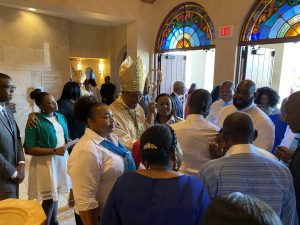 Bishop Dewane also thanked and recognized the Haitian priests serving in the Diocese for their continued dedication and passion for caring for the faithful, in particular those in the Haitian community. “The work you do does not go unnoticed,” the Bishop added.
Bishop Dewane also thanked and recognized the Haitian priests serving in the Diocese for their continued dedication and passion for caring for the faithful, in particular those in the Haitian community. “The work you do does not go unnoticed,” the Bishop added.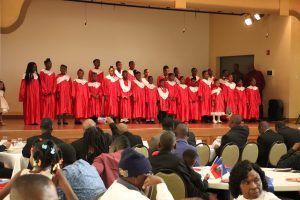 For the Haitian community, Jan. 1 is both a spiritual day, and an emotional day commemorating such an important day in their homeland. It was in 1803 that the Haitians defeated the largest and most powerful army at the time, the army of Napoleon, in Cap-Haitien. Haiti became the second country in the Americas to declare its Independence.
For the Haitian community, Jan. 1 is both a spiritual day, and an emotional day commemorating such an important day in their homeland. It was in 1803 that the Haitians defeated the largest and most powerful army at the time, the army of Napoleon, in Cap-Haitien. Haiti became the second country in the Americas to declare its Independence. In 2019 hundreds of widows and widowers were recognized during the first Mass at Epiphany Cathedral in Venice. The response was overwhelmingly positive and was described by several as beautiful and touching.
In 2019 hundreds of widows and widowers were recognized during the first Mass at Epiphany Cathedral in Venice. The response was overwhelmingly positive and was described by several as beautiful and touching.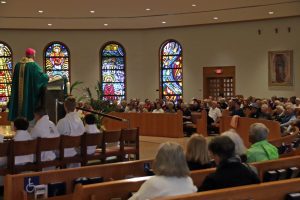 The concept for the Mass grew out of the annual Mass honoring couples celebrating significant wedding anniversaries. Those Masses, which will be held Feb. 1 at Epiphany Cathedral in Venice and February 29 at St. Leo the Great Parish in Bonita Springs, are extraordinarily popular. At the conclusion of one such Mass, a volunteer noted that she would have attended the anniversary Mass but for the fact that her spouse had recently passed away. This planted the seed for what has now become the annual Widows and Widowers Mass. (Registration for the Anniversary Masses is through your Parish.)
The concept for the Mass grew out of the annual Mass honoring couples celebrating significant wedding anniversaries. Those Masses, which will be held Feb. 1 at Epiphany Cathedral in Venice and February 29 at St. Leo the Great Parish in Bonita Springs, are extraordinarily popular. At the conclusion of one such Mass, a volunteer noted that she would have attended the anniversary Mass but for the fact that her spouse had recently passed away. This planted the seed for what has now become the annual Widows and Widowers Mass. (Registration for the Anniversary Masses is through your Parish.)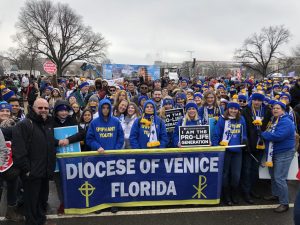 The Diocese of Venice Respect Life Office is co-sponsoring several events to mark the 47th tragic anniversary of the Roe v. Wade U.S. Supreme Court decision which opened the door for abortion in the United States.
The Diocese of Venice Respect Life Office is co-sponsoring several events to mark the 47th tragic anniversary of the Roe v. Wade U.S. Supreme Court decision which opened the door for abortion in the United States.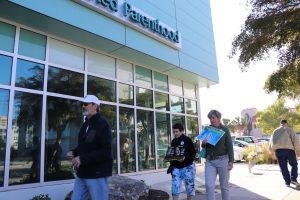 In addition, the U. S. Catholic Bishops invite everyone to join thousands of Catholics nationwide for 9 Days of Prayer for Life, a novena from Jan. 21-29 for the protection of human life. Each day’s intention is accompanied by a short reflection and suggested actions to help build a Culture of Life. You can receive daily pro-life prayers via e-mail or on your phone via text. For further information, visit
In addition, the U. S. Catholic Bishops invite everyone to join thousands of Catholics nationwide for 9 Days of Prayer for Life, a novena from Jan. 21-29 for the protection of human life. Each day’s intention is accompanied by a short reflection and suggested actions to help build a Culture of Life. You can receive daily pro-life prayers via e-mail or on your phone via text. For further information, visit 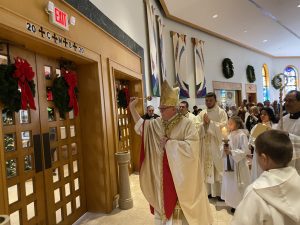 On Jan. 5, the Feast of the Epiphany of the Lord, the Feast Day of Epiphany Cathedral in Venice, Bishop Frank J. Dewane presided over a tri-lingual Mass (English, Spanish and Polish). This annual tradition includes the different language communities that are based at the Cathedral. At the beginning of the Mass, Bishop Dewane blessed the Cathedral where it is inscribed 20+C+M+B+20 (the year and the initials of the three magi) above the main interior entrance to the Church.
On Jan. 5, the Feast of the Epiphany of the Lord, the Feast Day of Epiphany Cathedral in Venice, Bishop Frank J. Dewane presided over a tri-lingual Mass (English, Spanish and Polish). This annual tradition includes the different language communities that are based at the Cathedral. At the beginning of the Mass, Bishop Dewane blessed the Cathedral where it is inscribed 20+C+M+B+20 (the year and the initials of the three magi) above the main interior entrance to the Church.